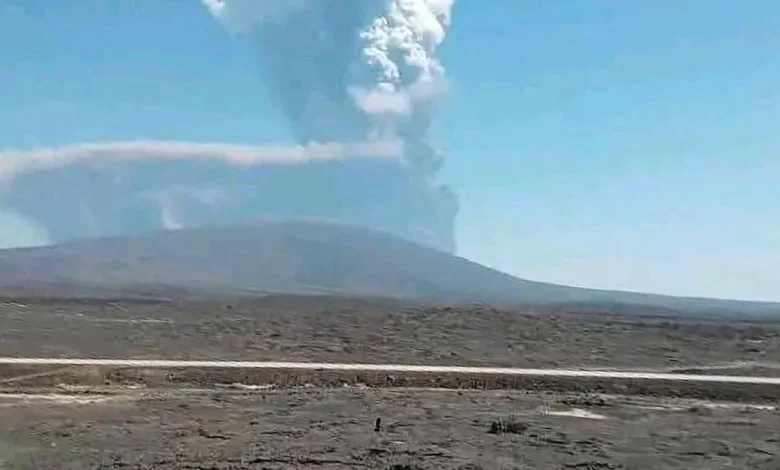Why did Hayli Gubbi erupt now?

In this photo released by the Afar Government Communication Bureau, ash billows from an eruption of the long-dormant Hayli Gubbi volcano in Ethiopia.
| Photo Credit: AP
Hayli Gubbi is a shield volcano in Afar, Ethiopia, and a member of the Erta Ale Range. It’s located at the edge of the East African Rift where the African and Arabian plates are slowly pulling apart. A shield volcano is a broad, gently sloping volcano that consists of many thin, fluid lava flows. Its eruptions are typically less explosive so the lava spreads out wide like a warrior’s shield — and so the name.
Geological studies have shown that Hayli Gubbi is built mainly from dark basaltic lavas but also contains more silica-rich rocks like trachytes and rhyolites. These lighter magmas can trap more dissolved gases, so when they rise, they’re more likely to erupt explosively and throw ash high into the atmosphere. That’s what happened on November 23.
But why did it erupt now after at least 12,000 years of quiet? While it’s early days, scientists believe the answer lies deep under the rift. As the tectonic plates move apart, hot mantle rock rises and partially melts, feeding magma into shallow chambers beneath the volcano. Over millennia, this magma can slowly build up and pressurise the rocks above it.
At some point, faulting or cracking of the crust will open a path to the surface, allowing the pressurised, gas-rich magma to rise quickly and the dissolved gases to expand into bubbles.
Because the volcano is remote and poorly monitored, scientists are still analysing satellite images and ash samples, so their explanations are provisional and may change as new data becomes available.
Published – November 25, 2025 12:19 pm IST





